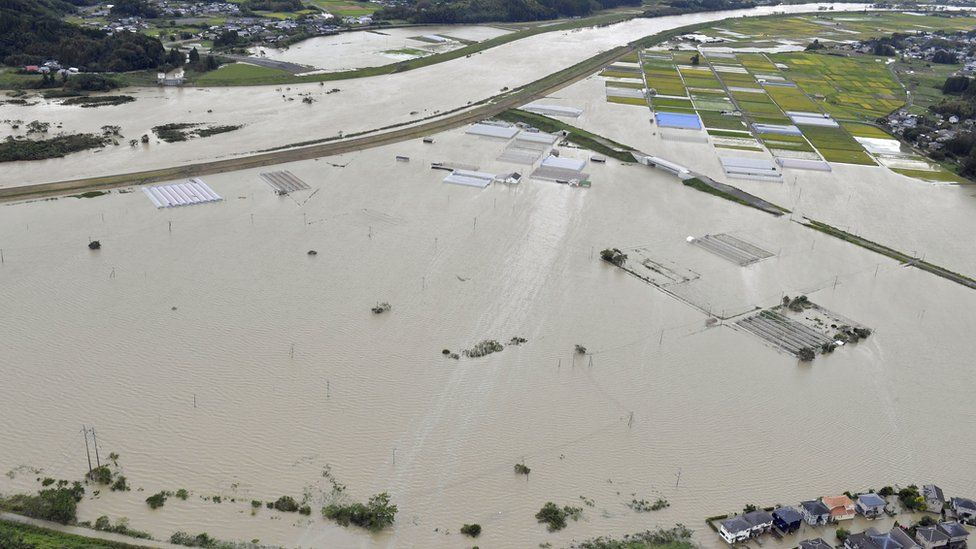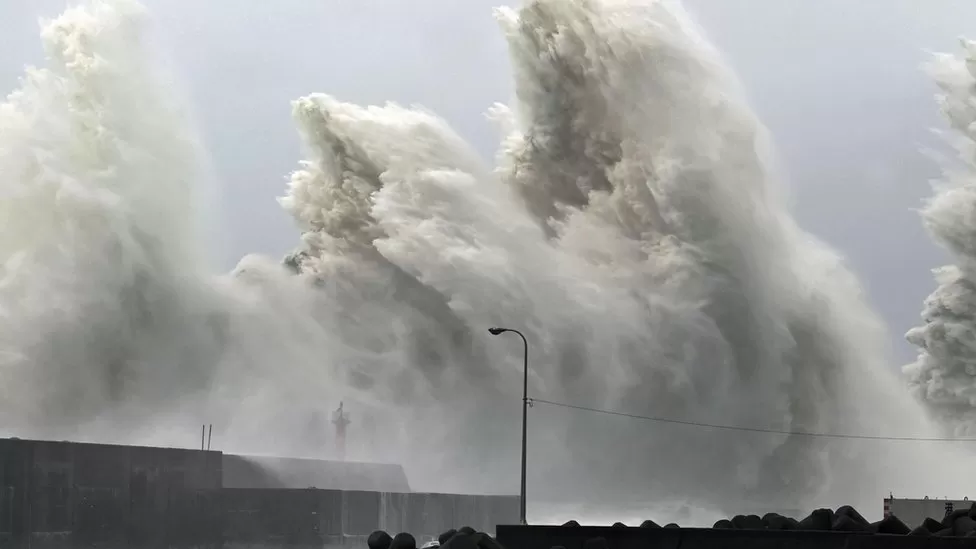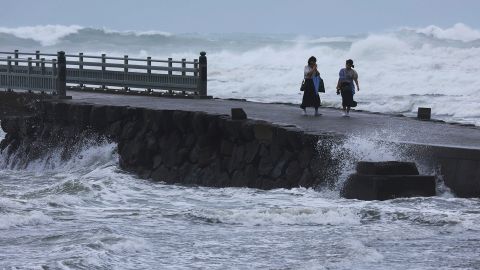Nanmadol typhoon has until now caused death of two people and more than 100 were injured when it dumped torrential rain as it crossed Japan made its way into the Pacific Ocean on Tuesday. The storm also paralyzed transportation and left thousands of houses without power.
On Sunday morning, the typhoon hit the coast close to the city of Kagoshima, which is located on Kyushu, the southernmost island in Japan, and is expected to soon set sail on Honshu, the largest island. In Kyushu, a river has burst its banks. Thousands of people had to sleep in emergency shelters on Sunday night.
One individual was killed after his car was flooded in water, according to state broadcaster NHK, and another died after being buried in a landslide.87 people have been hurt, and one additional individual is still missing. Local video footage reveals crashed billboards and buildings with their roofs torn off.
By Wednesday, the storm caused by Nanmadol is expected to go out to sea after turning east and passing over Honshu, the largest island in Japan. Heavy rains have been falling in the nation’s capital, Tokyo, and flooding has forced the suspension of the Tozai underground line.
Over 500,000 people in the regions of Kagoshima, Miyazaki, Oita, Kumamoto, and Yamaguchi are on a level-five alert, the highest possible catastrophe warning in Japan. Following a level four notice, a total of about nine million people have been told to leave some of the Kyushu, Shikoku, and Chugoku areas.
Numerous planes, ferries, and bullet train services had been cancelled. Sandbags had been placed to protect certain properties, and numerous stores and other businesses have shuttered.
To assess the storm’s effects, Prime Minister Fumio Kishida postponed his trip to New York, where he was scheduled to address the UN General Assembly, until Tuesday.

Source: Reuters
Current Situation
The Economy and Industry Ministry reported that a wall at a space center operated by the Japan Aerospace and Exploration Agency was destroyed on Tanegashima island, which is south of Kyushu island. The building used for rocket assembly was being evaluated for the degree of the damage.
According to the Economy and Industry Ministry, more than 130,000 residences, the majority of which were in the Kyushu area, were still without electricity as of Tuesday morning. The distribution of some supplies has been delayed, and several convenience stores have previously been shuttered.

Source: Reuters
After a three-day weekend, commuters returned to work on Tuesday, and most modes of transportation were back to normal. The majority of ground transportation, including bullet trains, resumed operation, although scores of flights in northeastern Japan were cancelled.
The Japan Meteorological Agency reported on Tuesday that the tropical storm has moved offshore toward the Pacific Ocean off the coast of northern Japan.
About Nanmadol Typhoon
Nanmadol Typhoon has produced wind gusts as high as 234 km/h (145 mph), and 400 mm (16 inches) of rain was predicted to fall in some locations in a single day.

Source: Reuters
The US Joint Typhoon Warning Centre (JTWC) classified Nanmadol as a super typhoon, a phrase used to describe storms with sustained wind speeds of 240 km/h (150 mph) or greater. It is comparable to a storm that is in category 4 or 5.
This year’s hurricane season is expected to be exceptionally aggressive, according to forecasters, thanks to a phenomena called La Niña. Climate change-related increases in sea surface temperatures in the Atlantic and Caribbean may also have an effect.
According to the Intergovernmental Panel on Climate Change (IPCC), severe tropical cyclones are predicted to become more frequent worldwide.
To know more about Nanmadol , please click here













